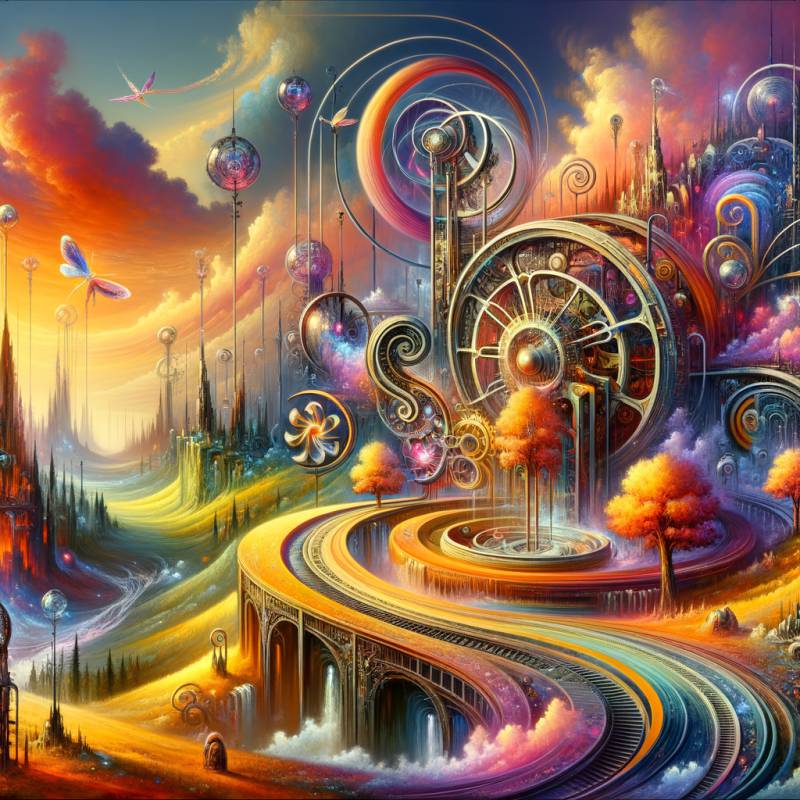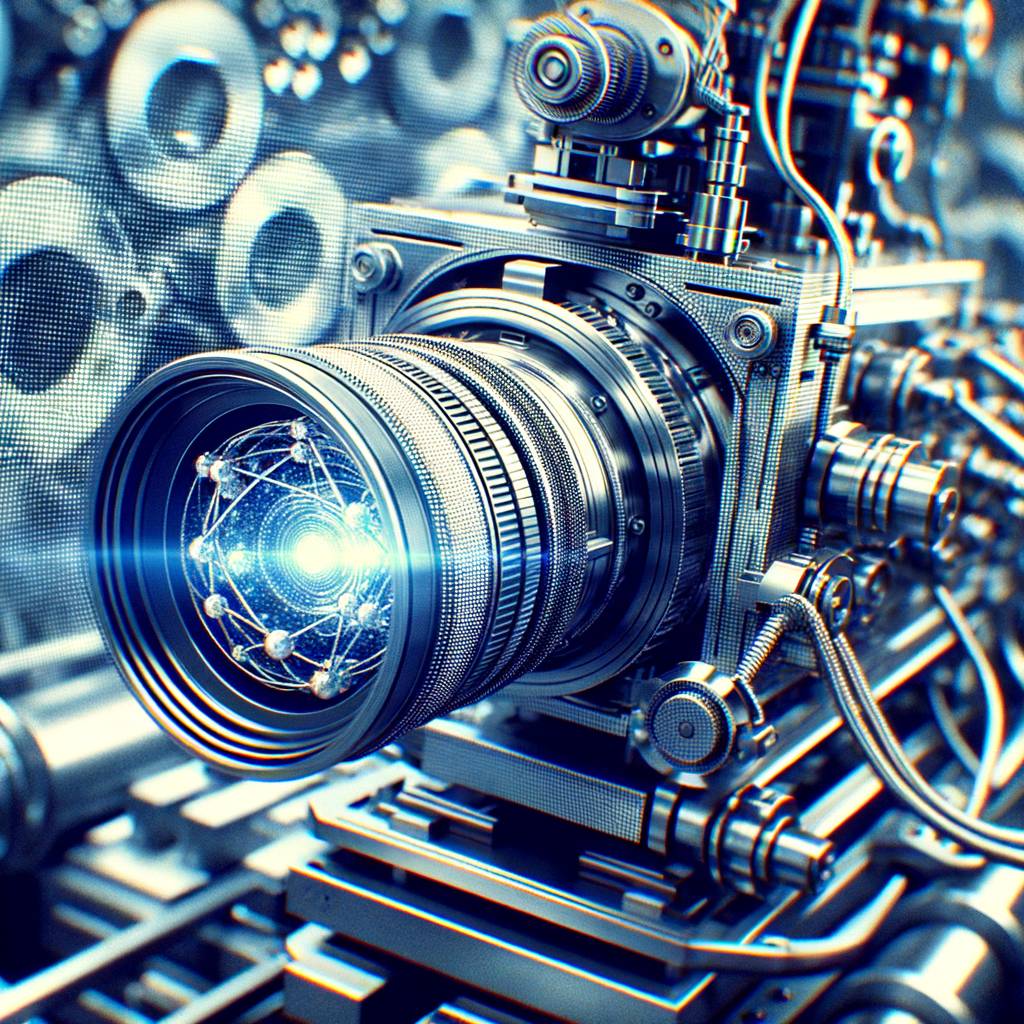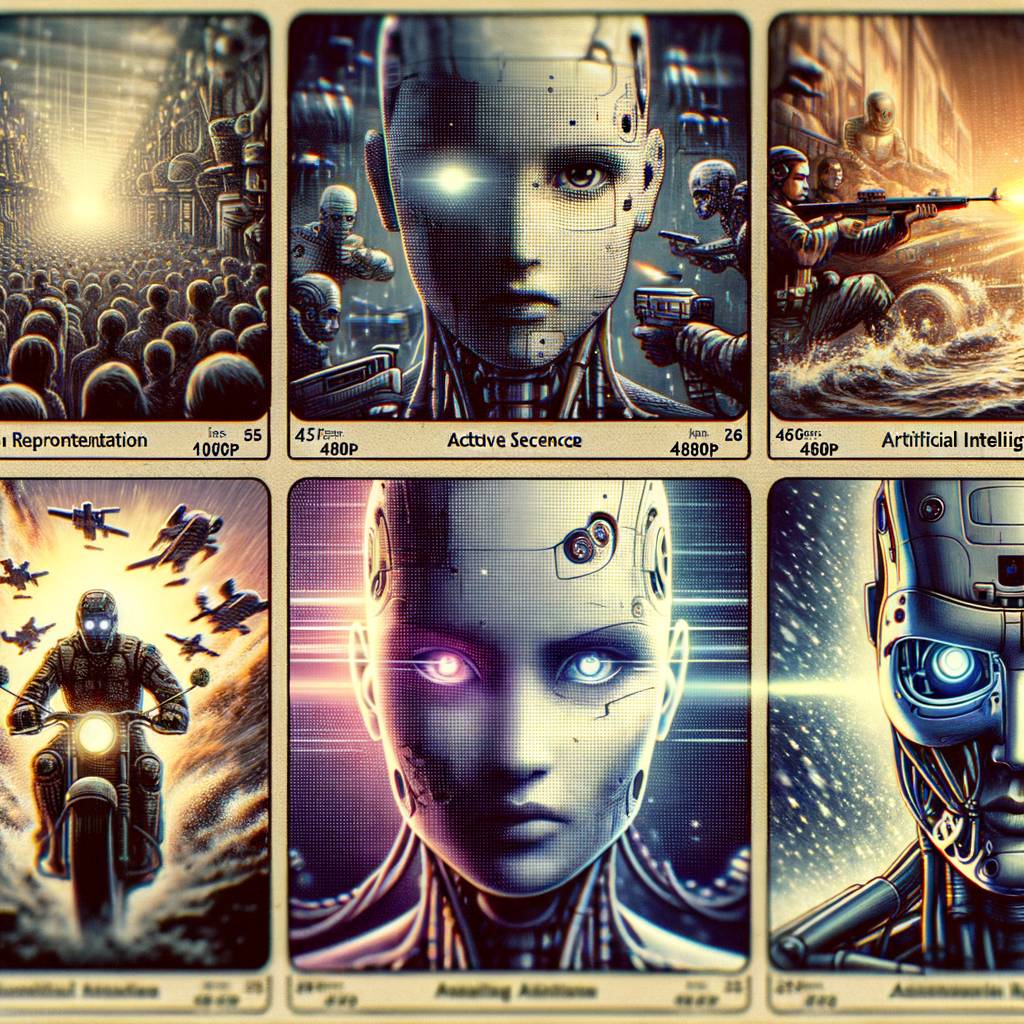Exploring the Accuracy: Sci-Fi Movies and their Predictions of Modern Tech
From the moment the first reel of a science fiction film flickered onto the silver screen, audiences have been captivated by the genre’s audacious visions of the future. These cinematic masterpieces, often dismissed as mere flights of fancy, have proven to be uncannily accurate predictors of modern technology. From the communicators in Star Trek to the AI systems in 2001: A Space Odyssey, the line between science fiction and reality has blurred significantly over the years.
The Star Trek series, a cornerstone of the sci-fi genre, has been particularly prophetic. The handheld communicators used by Captain Kirk and his crew bear a striking resemblance to the flip phones that dominated the late 90s and early 2000s. Even more impressive is the series’ prediction of tablet computers. Long before the advent of iPads and Kindles, Starfleet officers were seen reading from handheld, touchscreen devices.
Similarly, the 1968 film 2001: A Space Odyssey introduced audiences to HAL 9000, an artificial intelligence system capable of speech recognition, natural language processing, lip reading, and even expressing emotions. Today, we interact with similar AI systems like Siri, Alexa, and Google Assistant on a daily basis. These virtual assistants, while not as ominously sentient as HAL, can understand and respond to our commands, play music, set reminders, and even tell jokes.
In the realm of robotics, the Star Wars franchise gave us a glimpse of what was to come. The lovable droid R2-D2, with its myriad of tools and functions, is not unlike the multi-purpose robots we see today in factories and warehouses. The film’s humanoid robot C-3PO, with its ability to understand and translate multiple languages, foreshadowed the development of real-world translation software.
Even the concept of virtual reality, which is becoming increasingly prevalent in gaming and entertainment, was first popularized in sci-fi films. The Matrix, with its depiction of a fully immersive virtual world, was a harbinger of the VR technology we now enjoy. Similarly, the holographic technology seen in films like Star Wars and Minority Report is slowly becoming a reality, with scientists and engineers making significant strides in the field.
However, it’s important to note that these predictions were not always spot-on. For instance, Back to the Future II’s vision of 2015 included flying cars and self-lacing shoes, neither of which are commonplace today. Similarly, while we have made significant progress in space exploration, we are still far from the interstellar travel depicted in films like Star Trek and Star Wars.
Despite these occasional misses, the accuracy of many sci-fi predictions is truly astounding. It’s as if the creators of these films had a crystal ball, giving them a glimpse into the technological marvels of the future. But perhaps it’s not so much a case of prediction as it is of inspiration. These films have undoubtedly sparked the imaginations of countless scientists, engineers, and inventors, encouraging them to turn these fantastical ideas into reality.
In conclusion, the relationship between science fiction and reality is a fascinating one. Sci-fi films have not only predicted many aspects of modern technology but have also played a significant role in shaping our technological landscape. As we continue to push the boundaries of what’s possible, who knows what future sci-fi films will predict, or inspire, next?
The Influence of Sci-Fi Movies on Today’s Technological Innovations

From the moment the first reel of a science fiction film flickered onto the silver screen, audiences have been captivated by the genre’s audacious visions of the future. These cinematic masterpieces, brimming with fantastical gadgets and advanced technologies, have not only entertained us but have also inspired real-world innovations. Indeed, the influence of sci-fi movies on today’s technological advancements is both profound and undeniable.
Take, for instance, the iconic communicator devices used in the 1960s television series “Star Trek”. These handheld gadgets, which allowed the crew of the Starship Enterprise to communicate across vast distances, were nothing short of revolutionary at the time. Fast forward a few decades, and we find ourselves living in a world where smartphones – devices strikingly similar to those Star Trek communicators – are an integral part of our daily lives. It’s almost as if the scriptwriters and prop designers of the past were privy to a crystal ball, predicting the advent of mobile communication technology with uncanny accuracy.
Similarly, consider the holographic technology showcased in the “Star Wars” franchise. The image of Princess Leia’s holographic plea for help is etched in the minds of millions. Today, we are on the brink of making such technology a reality. Companies like Microsoft are developing mixed reality headsets that can project holograms into the real world, blurring the lines between fiction and reality.
Even the concept of artificial intelligence (AI), which has been a staple of sci-fi movies for decades, is now a part of our everyday lives. From the sentient computer HAL 9000 in “2001: A Space Odyssey” to the charming androids of “Blade Runner”, AI has always been a fascinating and sometimes terrifying element of futuristic storytelling. Today, AI is no longer a figment of our imagination but a tangible technology that powers everything from our personal assistants like Siri and Alexa to self-driving cars.
Moreover, the influence of sci-fi movies extends beyond the realm of consumer technology. The medical field, for instance, has seen significant advancements inspired by science fiction. The “Star Trek” franchise, once again, provides a compelling example with its ‘tricorder’ device, a handheld gadget capable of diagnosing a wide range of medical conditions. Today, companies are developing portable diagnostic devices that echo the functionality of the tricorder, promising a future where comprehensive healthcare is literally in the palm of our hands.
In essence, the visions of the future portrayed in sci-fi movies have served as a blueprint for technological innovation. These films have sparked the imaginations of scientists, engineers, and inventors, encouraging them to transform the seemingly impossible into reality. They have pushed the boundaries of what we believe is achievable, challenging us to continually strive for progress.
As we stand on the cusp of a new era of technological advancements, it’s exciting to ponder what the sci-fi movies of today are predicting for our future. Will we see the development of teleportation technology as in “Star Trek”, or perhaps the creation of fully immersive virtual realities as in “The Matrix”? Only time will tell. But one thing is certain: the influence of sci-fi movies on technological innovation is a testament to the power of imagination and the limitless potential of human ingenuity.
Unveiling the Future: How Sci-Fi Movies Foretold Modern Tech Developments
From the moment the first reel of a science fiction film flickered onto the silver screen, audiences have been captivated by the genre’s ability to transport us to distant galaxies, introduce us to alien species, and immerse us in futuristic societies. But beyond the spectacle and the thrill, sci-fi movies have also served as a crystal ball, offering a glimpse into the future of technology. From screen to reality, the world of sci-fi has predicted, and in some cases, even inspired, many of the technological advancements we enjoy today.
Take, for instance, the iconic 1968 film “2001: A Space Odyssey.” The movie introduced audiences to HAL 9000, an artificial intelligence system capable of speech recognition, facial recognition, natural language processing, and even lip reading. Fast forward to the present day, and we find ourselves interacting with Siri, Alexa, and Google Assistant, AI systems that have eerily similar capabilities. The film’s depiction of video calling also predates the advent of Skype and FaceTime by several decades.
Similarly, the 1982 film “Blade Runner” presented a dystopian future where biologically engineered humanoids, known as replicants, were virtually indistinguishable from humans. Today, we are witnessing the rise of humanoid robots and sophisticated AI that can mimic human behavior to a startling degree. Sophia, the world’s first robot citizen, is a testament to how far we’ve come in this regard.
The 1990 film “Total Recall” featured characters using self-driving cars, a concept that seemed far-fetched at the time. Yet, here we are, in an era where autonomous vehicles are no longer the stuff of science fiction but a rapidly emerging reality. Companies like Tesla, Waymo, and Uber are leading the charge in this field, bringing us ever closer to the day when self-driving cars become commonplace.
Even the concept of virtual reality, which has become a significant part of our entertainment and gaming landscape, was first popularized in sci-fi films. The 1992 film “The Lawnmower Man” showcased a character being transformed into a genius through virtual reality, a concept that seemed purely fantastical at the time. Today, VR technology is not only used for entertainment but also in various fields like education, healthcare, and real estate.
In the realm of communication, the communicators used in the “Star Trek” series bear a striking resemblance to our modern-day mobile phones. The series also introduced the concept of a universal translator, a device that could instantly translate alien languages. Today, we have apps like Google Translate that can instantly translate text or speech into multiple languages.
These examples are a testament to the power of imagination and the role of science fiction in shaping our technological landscape. Sci-fi movies serve as a canvas for our wildest technological dreams, pushing the boundaries of what’s possible and inspiring us to turn these dreams into reality. They challenge us to question our assumptions, to look beyond the present, and to envision a future where technology can transform our lives in ways we never thought possible.
In conclusion, the line between science fiction and reality is becoming increasingly blurred. The tech predictions made in sci-fi movies are not only coming true but are also shaping the way we live, work, and play. As we continue to push the boundaries of technology, who knows what other sci-fi predictions will become a reality in the years to come? One thing is for sure: the future is here, and it’s more exciting than we could have ever imagined.



